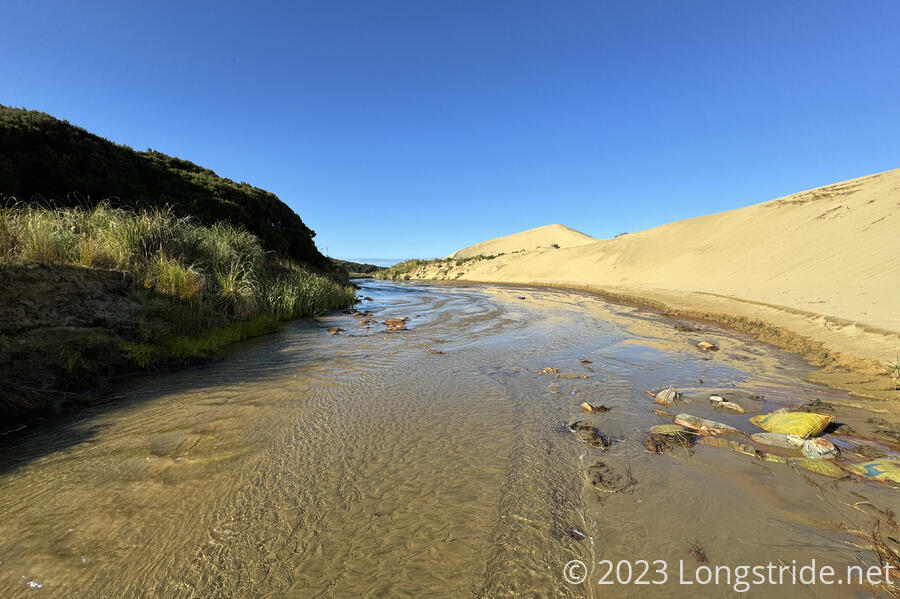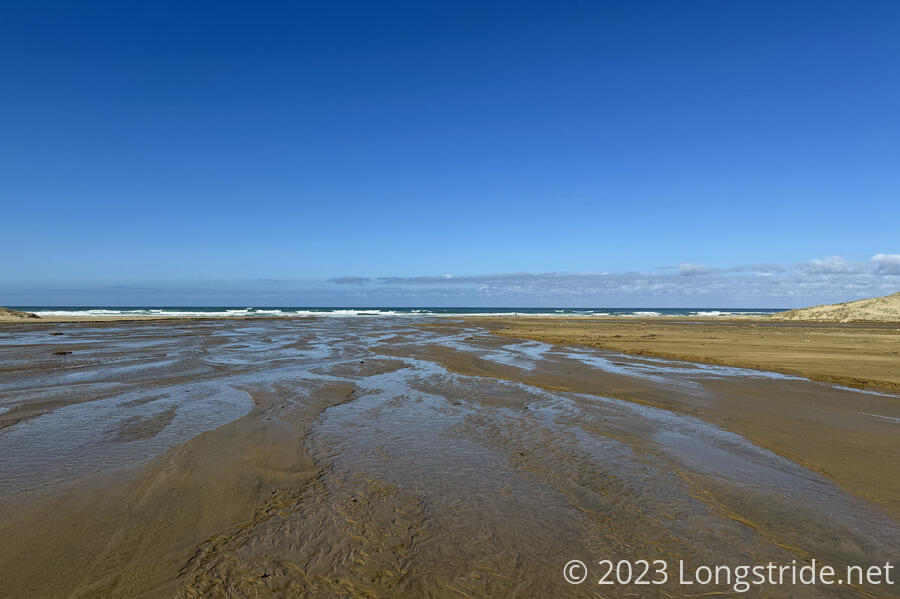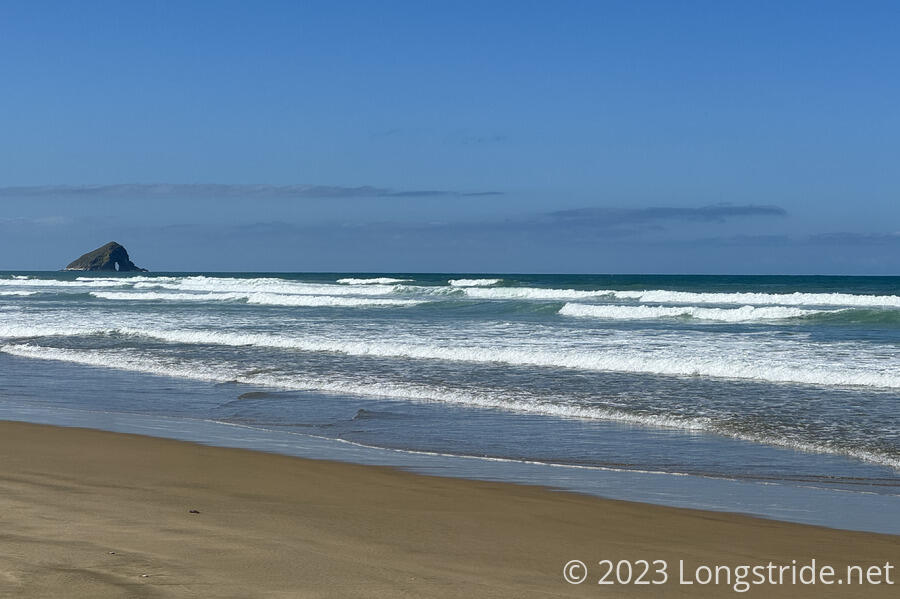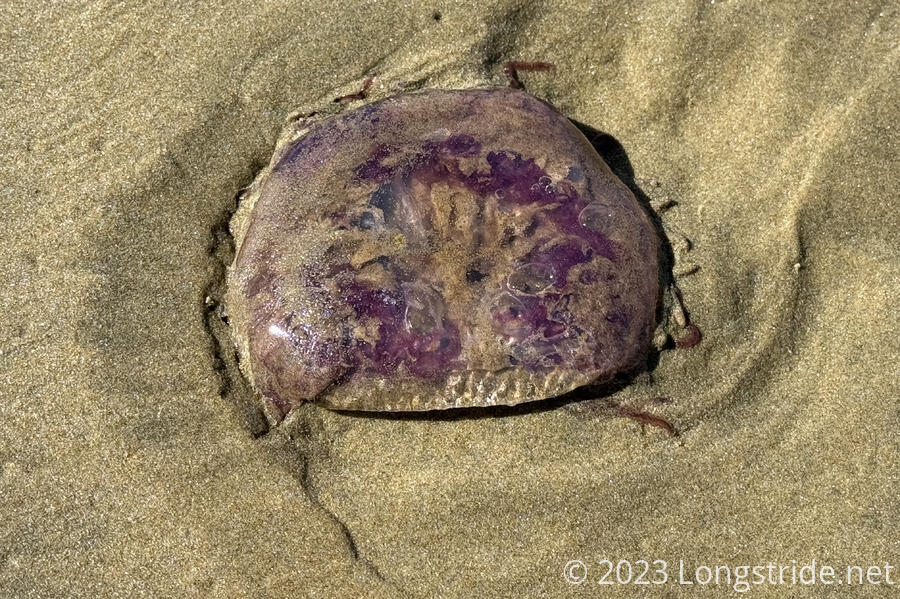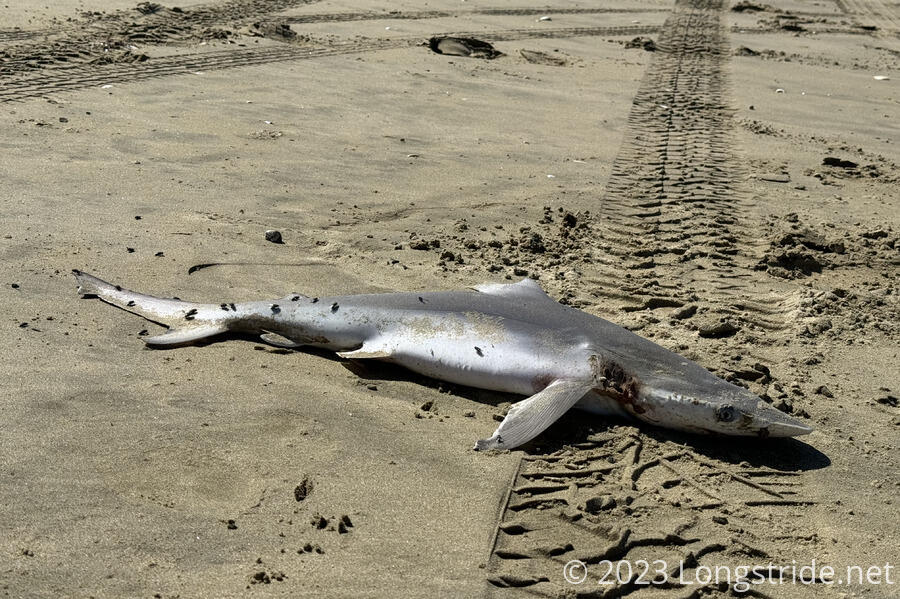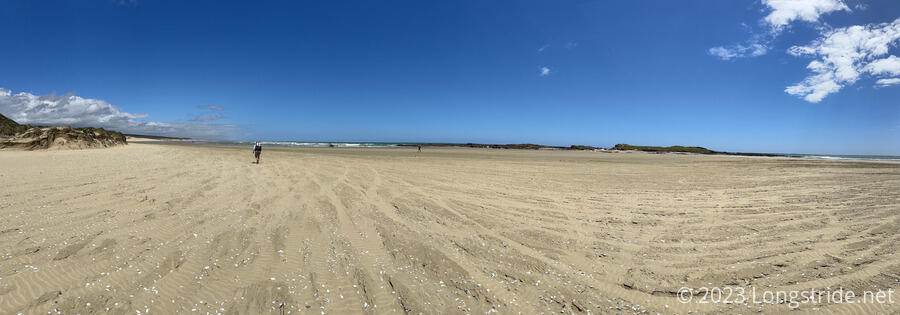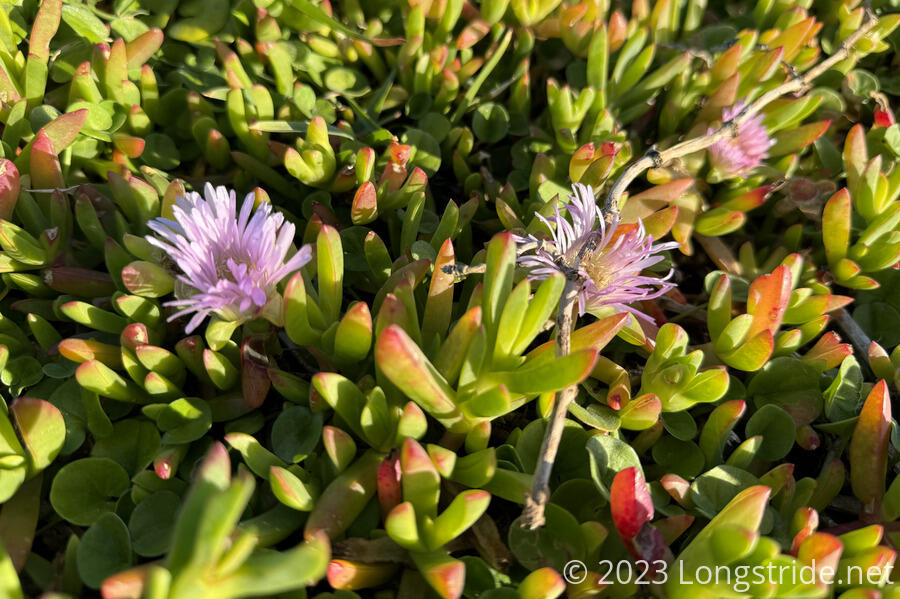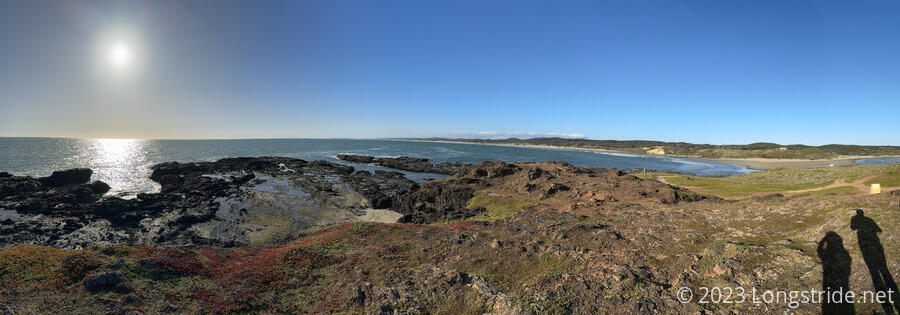Today brought us to the start of the longest beach walk on Te Araroa: Ninety Mile Beach.
It was a bit cold overnight, but our sleeping bags kept us warm. Unsurprisingly, there was a lot of condensation on our tent, and it took a while to dry it out enough to pack it.
CareFree and I started down Te Paki stream, hiking a few kilometers through the stream, until it reached the ocean. As it got further from the picnic area, the stream bed widened significantly, easily 50 or 100 feet wide. The stream itself didn’t always take up its whole bed, instead often meandering back and forth between the dunes on the right and Aupōuri Forest on the left. Still somewhat early in the morning, only one car passed us on the “road” that was the stream.
Not wanting to walk the stream barefoot, I hiked in my crocs until the stream reached Ninety Mile Beach. This was probably the longest walk I’ve done in my crocs, and because of the water and my foot rubbing against the side of the shoe, a layer of skin got rubbed off there. I put a bandage over it when I dried my feet off and hoped that would suffice.
Ninety Mile Beach isn’t actually 90 miles long. The TA runs 84.6 km (53 miles) along nearly all of its length. Due to the detour from the terminus, we start about 4 km from the north end of the beach. To the south, a vast sea of sand stretched as far as we could see, obscured by the haze of ocean spray and clouds in the distance.
We reached the ocean shortly after high tide. A loose sandy beach next to a several meter high dune anchored with grasses quickly gave way to a more firm, but still squishy, beach, very gently sloping towards the ocean. Behind the relatively consistent dune was Aupōuri Forest, which only occasionally came within view.
Turning southwest, we followed the beach. A small island just off the coast with an arch provided a good frame of reference the first part of the day as we progressed down the beach.
For the whole day, the majority of people we could see at any time were TA hikers. We didn’t see anyone else walking the beach; the other people we did see were in trucks, or fishing near their trucks. Fairly removed from settlements, there were no casual beachgoers or sunbathers.
Especially towards the end of our hiking day, a fair number of the vehicles passing us were flatbed trucks carrying smaller front-loaders that were holding cages. In the afternoon, I finally I suspected they were to harvest something when the tide came in, but I was unsure what.
As we progressed down the beach, the tide gradually went out, and the beach got wider and wider. More firm sand was available to walk on, making it gradually easier to hike.
For a large part of the day, the beach was spotted with hundreds (or perhaps even thousands) of purple jellyfish. There were also numerous pufferfish and even a few sharks washed up on the sand.
Over the course of the day, we crossed a few more creeks flowing into the ocean. At least now, they didn’t have much flow, and were fairly easy to cross; often the creeks were several (temporary) channels only half an inch deep (if even), and so we could just walk straight through with no problem. Other times, they were deeper, but only a couple of feet wide between channels, so some sandbar hopping was in order. In any case, we made our way through the creeks without getting much more water on our shoes than we were by walking through damp sand.
There was a nice, cool breeze blowing in from the ocean, which took the edge off a bit from full sun exposure. Early in the afternoon, the wind picked up a bit, and some clouds a bit inland to the south grew, but it remained a bright and cheery day for us.
That said, twenty kilometers of walking on mostly-firm beach was tiring, and I had very sore feet and a little bit of a sunburn on my legs once we reached the end of our day, at the Maunganui Bluff campsite.
The campsite had a pair of flush toilets, running water (which we assumed needed to be filtered), and a small shelter that we used to cook dinner. Sadly, there were no picnic tables, so the shelter was a bit cramped while it was in use. (There were fifteen of us that arrived from Te Paki, plus two smaller groups, one of which left in the afternoon, and a second with a very large car-camping tent that stayed at least overnight.)
After relaxing for a bit, we put our tent up, and cooked dinner. Afterwards, since it was still fairly early (we finished hiking around 2:45, and finished dinner around 6), CareFree and I decided (at her instigation) to head over to Wakatehāua Island, a tidal island that served as our landmark for the latter part of the day, once we passed the island with the arch. We hurried, knowing that the tide was coming in.
The island was lush and green, entirely unlike the beach or the forest we’d briefly hiked through yesterday and today. The trails were lined with succulents, some of which were blooming with purple and red flowers.
From the top of the island, we had a good view of the ocean, our campsite, and Ninety Mile Beach. We could see two figures approaching along the beach, one of them lagging behind, seemingly going through the water at a line of rocks jutting out from the dune at the edge of the beach. They were, unfortunately, slow enough that they no longer had an easy way through that bottleneck.
We also saw a channel filled with water where we’d crossed the beach to get to the island, and hurried back down. Unfortunately, we were too late, and had a span of water that was just a little too wide to jump over, and too deep to cross without getting our shoes wet. We probably still had plenty of time, but we were on the island for less than ten minutes, and in that ten minutes, the island was an island again, and we could see the beach clearly smaller on all sides.
Later, we confirmed that the two people we saw were the two Czech guys at camp last night, and they were slow because one of them had developed huge blisters on his foot.
Unfortunately, I was not immune to blisters either. The monotonous long-distance sand walking at the start of a hike gave me a blister on one of my toes.
The sun set, and with it, the wind died down. Our first day on Ninety Mile Beach is over, but there are still two more days on the beach to come.

